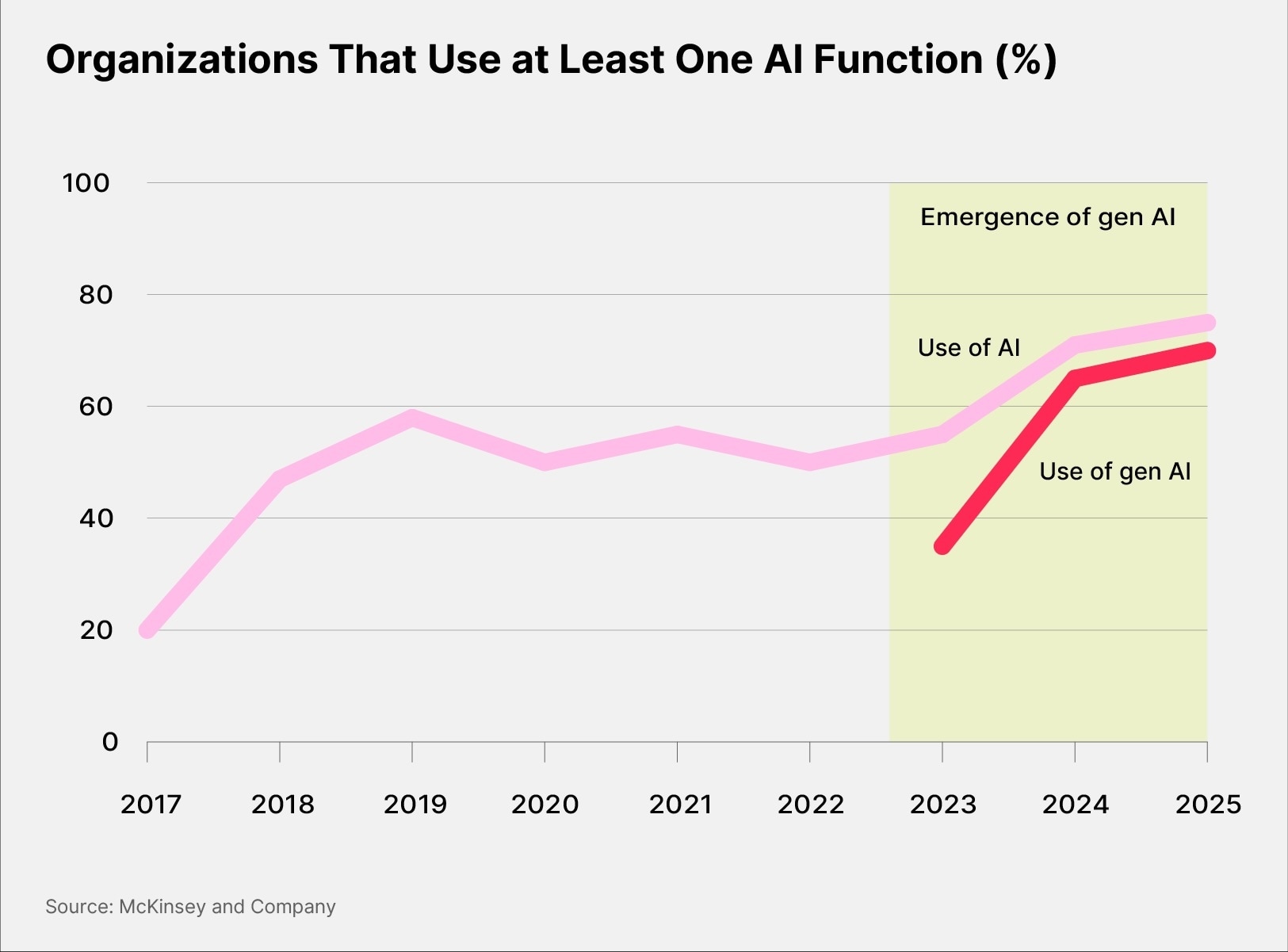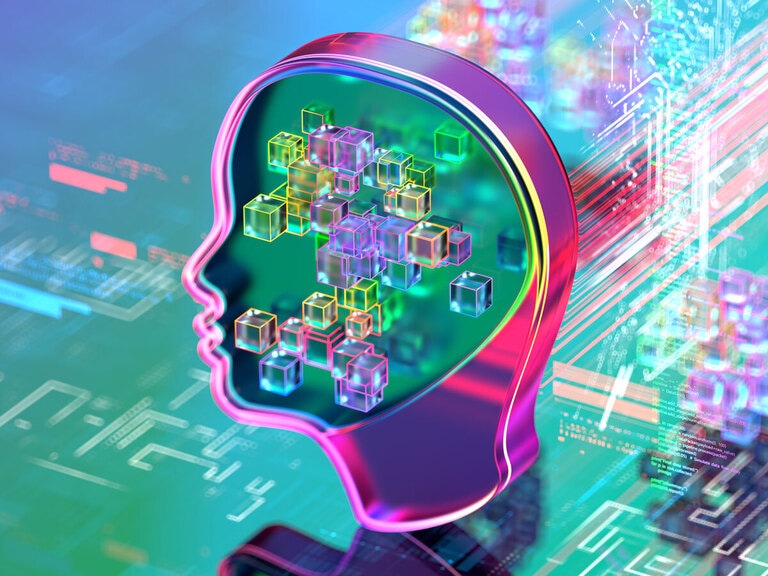The debut of generative artificial intelligence (AI) — AI capable of producing an output such as text or images — has been hailed as a revolution, with many companies racing to adopt or deploy AI tools. A June 2025 McKinsey report demonstrates that the proportion of companies using AI for at least one business function has risen from around 20% in 2017 to nearly 80% in 2025, as shown in the graph below.

It remains to be seen who will benefit the most from this growth. From chipmakers like Nvidia [NVDA] to model developers like OpenAI or Claude, and software-as-a-service firms like Box [BOX], a wide range of companies are capitalizing on the rollout of AI technology.
Ultimately, however, as Box CEO and co-founder Aaron Levie explains, it’s not a winner-takes-all situation.
“I actually think all layers of the stack end up benefiting in some way,” he says. The AI ecosystem consists of a multi-layered chain of businesses, with semiconductor manufacturers, data center providers and large language model designers all dependent on each other to produce and power AI that people can use. As more firms deploy AI at scale, its value begins to trickle down to other layers.
“We’re finally at the point where enterprises can utilize AI across their business processes. You’re going to see that value flow through at the software layer.”
In the latest OPTO Sessions, Levie unpacks how the transformational nature of AI influences its adoption, as well as how agentic AI is shaping the future of knowledge work.
Behavioral Change
Until recently, new developments in software had simply expanded the toolset people had to work with. As an enterprise cloud computing company, Box has been a pioneer in expanding the capabilities available to knowledge workers over the past two decades. Levie outlines the general trajectory of progress: “I upgraded from a chat system to Slack. I upgraded from Word to Google Docs. I upgraded from on-premises files to Box. That was a tool change.”
With agentic AI — the use of AI to perform entire tasks independently of human oversight — the change is even more fundamental, as it will require workers to behave differently. “The way I actually interact with software is totally different. I’m no longer doing all of the work myself within software. I’m actually interacting with AI labor on the other end.”
That change has the potential to alter the nature of work, but it could mean the adoption phase takes longer as workers adapt to their artificial coworkers. “You have to re-engineer your workflows to get the benefit of agents,” Levie explains. “You have to retool some of the ways that you’re operating.”
Most importantly, don’t expect everything to change overnight. “I think we have to be somewhat realistic that it’s going to be a multi-year journey,” he admits. “The change management in a large enterprise is non-trivial.”
The Future of Knowledge Work
Levie may be an AI bull, but he admits that there are many things that are still beyond current technological capabilities. Hallucinations underscore the need for human oversight, and context windows — the amount of information a generative AI model can remember during a session — mean that most agents can only perform tasks of a specific length before the quality of their work begins to degrade. There’s also the issue of each model having different capabilities: “does the model know to do the right thing with each of the requests that the user has?”
To gauge the strengths or weaknesses of a given AI model, Box conducts regular evaluations. The self-improving nature of AI presents a challenge here, however. “We’ll create an evaluation and then agents will saturate that evaluation,” he notes. “We have to actually increase the difficulty to ensure that we’re tracking with the latest capabilities.”
Ultimately, Levie imagines a future where AI has surpassed these constraints, allowing it to complete entire projects independently. “What if you could give an agent any type of task that you need to be able to do with all of your data?”
That then allows enterprises to spend more time actualizing the insights gained from the data. Levie paints a picture of a collaborative, AI-human workflow: “You could go and kick off that task and know that with a high degree of likelihood that it’ll be done effectively. And then you take that data, you share it with people and review it.”
“We imagine that will be what the future of a lot of knowledge work looks like,” he says.
But, with many AI capabilities still in the testing phase, what advice does Levie offer listeners to help prepare for this future?
“Spend as much time with these AI tools as possible. You’re going to learn so much more by using these technologies versus hypothesizing about them.”
Watch the full episode with Aaron Levie on YouTube, or listen on Spotify or Apple Podcasts.
Continue reading for FREE
Error! Please try submitting again.
Success! You have successfully signed up.

